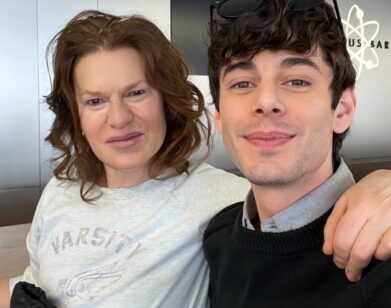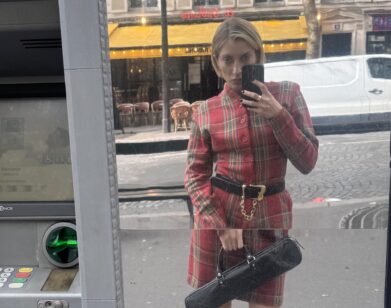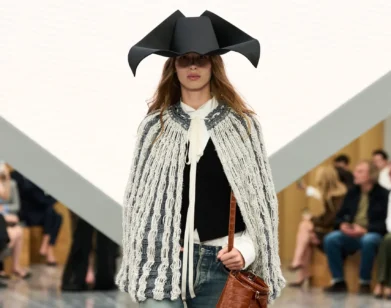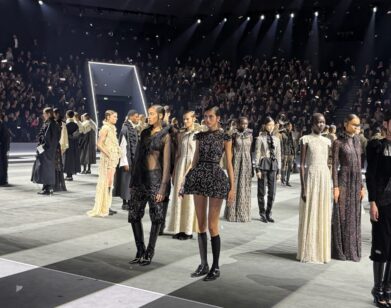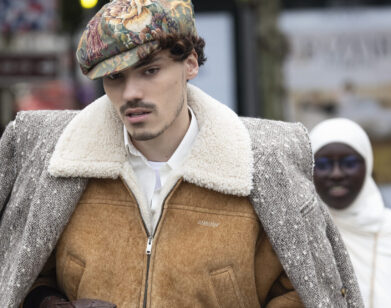HerreraInterview40Years
Wes Gordon and Sandra Bernhard Discuss the Possibilities of Fashion
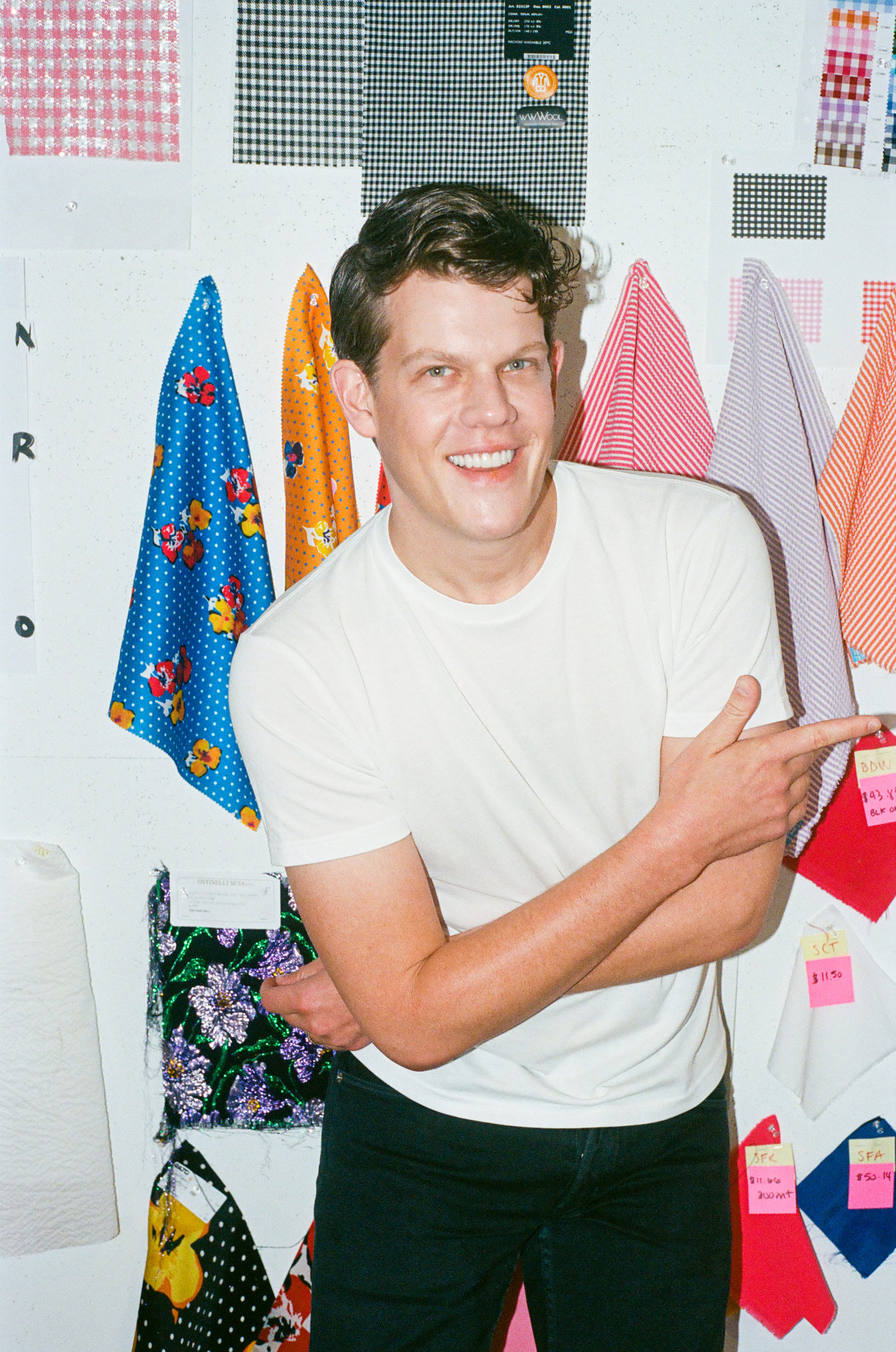
Wes Gordon never let time get in the way of his dreams of becoming a fashion designer. In 2009, as soon as he graduated from Central Saint Martins in London, the Atlanta native headed to New York City, where he began his eponymous label out of his apartment, and within two years, was selling his brand of elegant womenswear at Bergdorf Goodman while dressing people like Gwyneth Paltrow and Michelle Obama. In 2017, Gordon began consulting for Carolina Herrera and bonding with its legendary founder. One year later, he was named creative director of the brand. Now, he and his husband, the glassblower Paul Arnhold, have another baby to raise: an actual newborn named Henry. Over Zoom, the performer Sandra Bernhard—who happens to be Gordon’s friend and neighbor—got the nitty gritty on how Gordon is balancing his new life as a dad while steering the legendary fashion house into the future.
———
SANDRA BERNHARD: How is your baby?
WES GORDON: He’s three weeks old, today.
BERNHARD: Tell me his name, again?
GORDON: Henry. It was Paul’s grandfather’s name. No one knows a bad Henry, right? Henry Arnhold-Gordon. We decided to hyphenate. You kind of have to, because in certain countries, if you’re traveling as a single parent with a child, if you don’t have your last name, it’s—
BERNHARD: Let me tell you, when I had my baby and I went to Canada, they stopped me at the border. And the border patrol guy says, “Do you have a letter from your husband, giving you permission to travel?” I said, “I don’t have a husband.” “Well, the father of the child.” I said, “There is no father of the child.” I’m surprised I didn’t end up in prison. I was livid. I was ready to fucking tear his head off.
GORDON: I think if you’re a same-sex couple, you can unfortunately get put through the ringer a little more. So we hyphenated, and honestly, that way we feel even more bound as a family. And, how lucky are we, to be raising him in New York City in 2021? Where half the kids in school have two dads or two moms, or one dad or one mom, or hyphenated last names. I grew up in Atlanta. At that time, the idea of a kid going to school with two dads, would be—
BERNHARD: It’d be too traumatic. How’s your dog adjusting?
GORDON: She’s in love. She starts barking at us when she hears him crying. Whenever we can’t find her it’s because she’s in the nursery sleeping under his crib. It’s very cute. Animals know. How old is your daughter now?
BERNHARD: She’s going to be 23 on July 4.
GORDON: Wow, that’s amazing. Cancers are the best.
BERNHARD: She’s living in Brooklyn and is leaning towards being a chef, but she’s also a beautiful artist. Talk me through the pandemic, what you’ve designed, and how everyone’s approached presenting the different seasons.
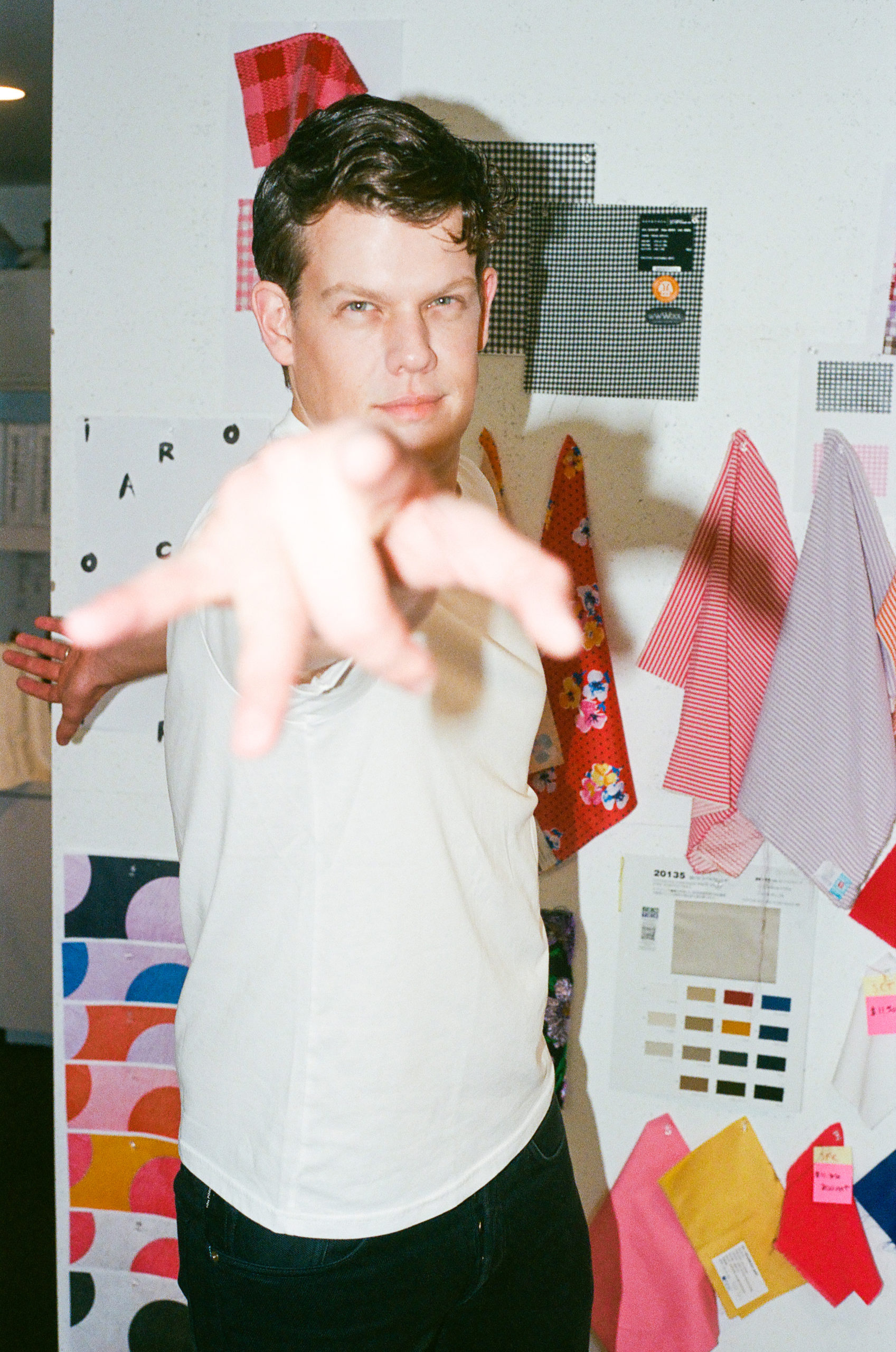
GORDON: During COVID, we worked the entire time, first from home and then the first instant that I could safely go back to the office, I was here. I’m in my office right now, and I have been here since last June. We didn’t miss a single collection. Ultimately, designers are storytellers. What separates fashion from clothes is the story that we tell with it. In a very dark moment of the world, our attempt at trying to create a beautiful story really inspired and motivated us. I’m now in my fourth year as creative director, and I had the amazing opportunity to overlap at the beginning with Mrs. Herrera herself for a little bit. New York is, unfortunately, light on heritage fashion houses. Halston, Geoffrey Beene, Blass, all these amazing brands are not what they were, if they’re still around at all. But Herrera is one of the cornerstones of New York fashion and a beacon of elegance and luxury. As a boy growing up in Atlanta who liked to draw dresses in the margins of his math homework, I held Herrera in high regard. There was something magical about it. And that magic has never been more necessary.
BERNHARD: What was the story during this time for you, personally, that you wanted to tell to uplift people?
GORDON: That life is beautiful. Maybe it’s the Cancer in me, but I am eternally a glass-half-full person. I think people have a tendency to focus on the things that are bad, forgetting the many things that are so beautiful and wonderful. What I design at Herrera is about beauty, and making things that are uplifting. Using colors that are pure, saturated, vibrant; and prints that are big and joyful—clothes that are a celebration. During that time in particular, I felt that I really needed to underline and highlight and put ten exclamation points under our brand message: that life is fabulous and a celebration.
BERNHARD: How did you present the clothes? What got people excited to buy clothes even though they weren’t necessarily going out to wear them?
GORDON: The very first season of lockdown, which was Resort, we did all the fittings on my farm up in Connecticut. Our fit model would drive in from upstate New York basically in a hazmat suit. We’d fit outside in the yard, and then we’d mail the pieces back to our factory. At a snail’s pace but with determination and teamwork, we put together a collection. Then I got Josh (Olins) to drive up and shoot it, and a beautiful model, and again, we just went around the farm and made beautiful images. The look book is dreamy. You can get caught up in thinking that making a show and a collection takes hundreds of people and millions of dollars. But sometimes it’s about rolling up your sleeves, having fun with a few creative people, grabbing a camera, and going out in a meadow and taking pictures. After, we shared the images on social media and emailers to our clients. And I started doing Zoom events instead of in-person appearances and trunk shows. There would be 150 women from all over the world on the same call and I could talk to them from home. I’d be doing these from the farm, and one day, I remember a baby horse had just been born. And suddenly, instead of being a fashion show, it became a big group conversation about what to name the baby horse.
BERNHARD: So people were buying clothes online! Who was buying the most?
GORDON: You saw a lot more spending based on geography, in places where events were still happening. It was particularly interesting to see how brides adapted. Most of them were not going to let anything stop their wedding from happening. Some women said, “You know what? I’m getting married in City Hall. I’m going to get a white pantsuit or a little white cocktail dress.” And then you saw others who were like, “Even if I can’t have my dream wedding, I still want an embroidered gown with a 40-foot train and a full veil.” I love that.
BERNHARD: I’m thrilled to hear that’s how it all evolved.
GORDON: Ultimately, that’s how people should dress don’t you think? Don’t do it for other people. Don’t do it for Instagram. Put on what makes you happy.
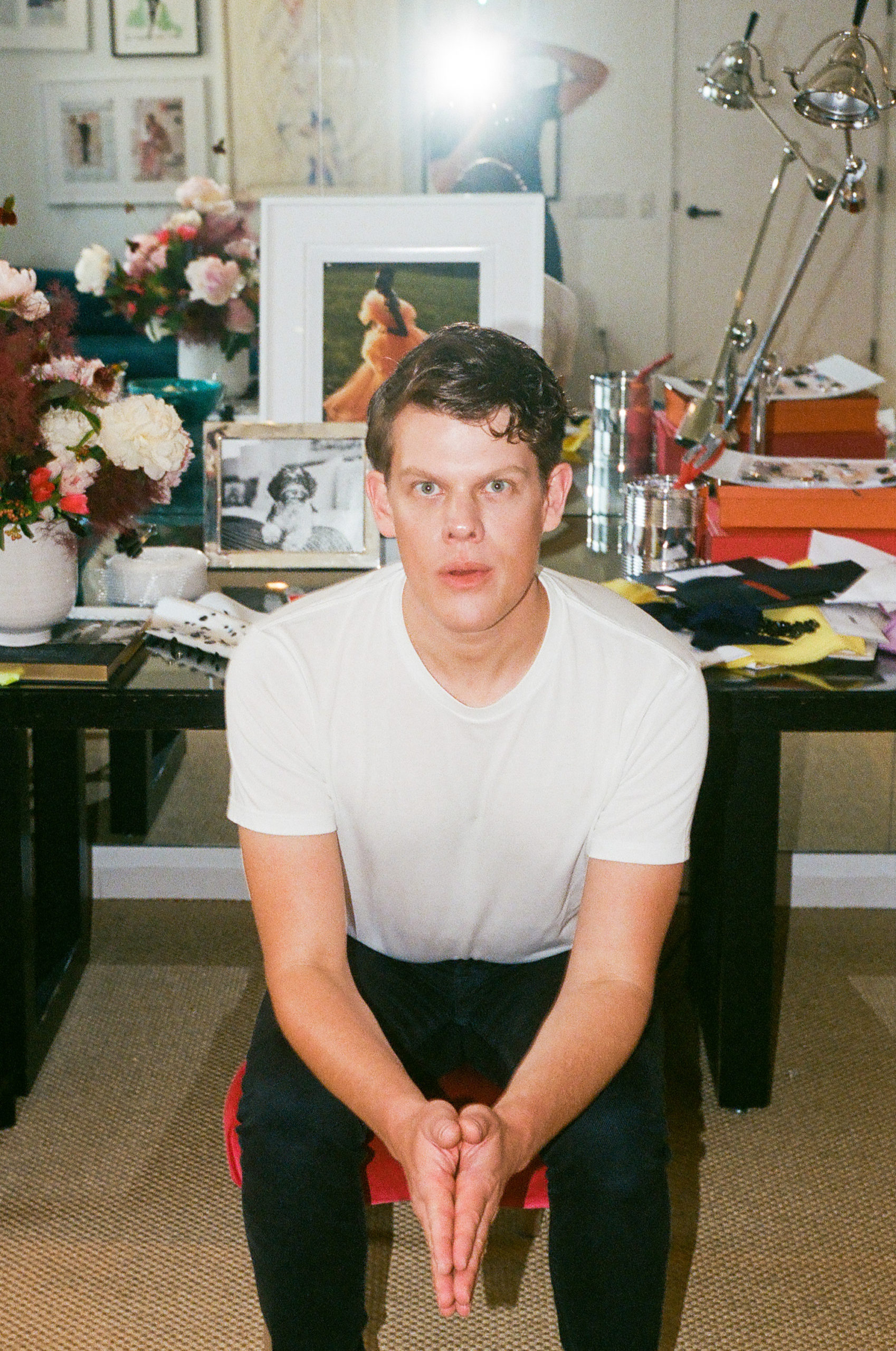
BERNHARD: What is your story for Spring 2022?
GORDON: It will have been a year and a half since I’ve been able to put on a fashion show. As we’re doing fittings and sketch reviews, I’m looking at everything from the perspective of, “Do I care? Is this exciting? Is this making my heart beat faster? Is this a show?” I want this to be a celebration. And it’s also the 40th year of Carolina Herrera. Mrs. Herrera founded the collection in 1981, and she showed at the Metropolitan Club. She invented that uptown, downtown mix—living in a Park Avenue townhouse, but having dinner at Indochine with Basquiat. I’m looking back at our archive to try and capture that exuberance, drama, and unapologetic glamour. The shoulders, the sleeves, the earrings, the pumps.
BERNHARD: When you started out, what was your ultimate goal?
GORDON: My goal was always to make my ideas, fantasies, and dreams real. I have very cool parents. My dad played Big Ten football, and I came to him and said, “Can you buy me a sewing machine?” I found an alterations woman who taught me how to sew. I applied to Central Saint Martins and moved to London for four years. In addition to making dresses for friends here and there, I spent summers at Oscar de la Renta in New York and Tom Ford in London. I spent my entire savings account on my wardrobe for those summers.
BERNHARD: What did you buy?
GORDON: I actually still have some of the clothes. It was a full-on Brideshead Revisited wardrobe of linen suits. It was a very dapper phase for me. I remember I couldn’t sit down on the subway to the office because I didn’t want to be wrinkly. When I graduated, I came to New York and got a tiny live/work space in the Financial District. I had an inflatable air mattress, and I would wake up really early to put away the bed and my clothes and take a shower, because I had interns and a freelance patternmaker coming. I had my own label for seven years. I met amazing people and created so many things that I’m proud of. I learned how clothes are made. I learned how the business works.
BERNHARD: What do you think is the biggest change you’ve brought to Carolina Herrera?
GORDON: I’m enamored with bright, happy, beautiful, big colors. In the past four years, the House has become associated with color. It’s part of our heritage though—just look at the Warhol portrait of Mrs. Herrera. The red lips and the big earrings and the yellow hair. When everyone else in New York is wearing charcoal and black and oatmeal, our woman wears hot pink and bright orange.
BERNHARD: I love color, too. I think color is a celebration. Growing up, which designers did you follow and think, “He, she, they, are really saying something I relate to.”
GORDON: Carolina Herrera definitely was one. My early exposure to fashion involved typing designer names into Amazon until I found a book that was inexpensive. There was a big, beautiful Valentino book. I remember the smell of it. I drew over every dress in that book. At the time, Dior had also started putting videos of their Galliano couture shows on their website. The buffering speed was so slow, but I’d marvel at someone’s ability to create a world. Not just a dress, a world. And a whole story. It made me so excited about the possibilities of fashion—it’s more than just the pattern for sewing an A-line skirt.
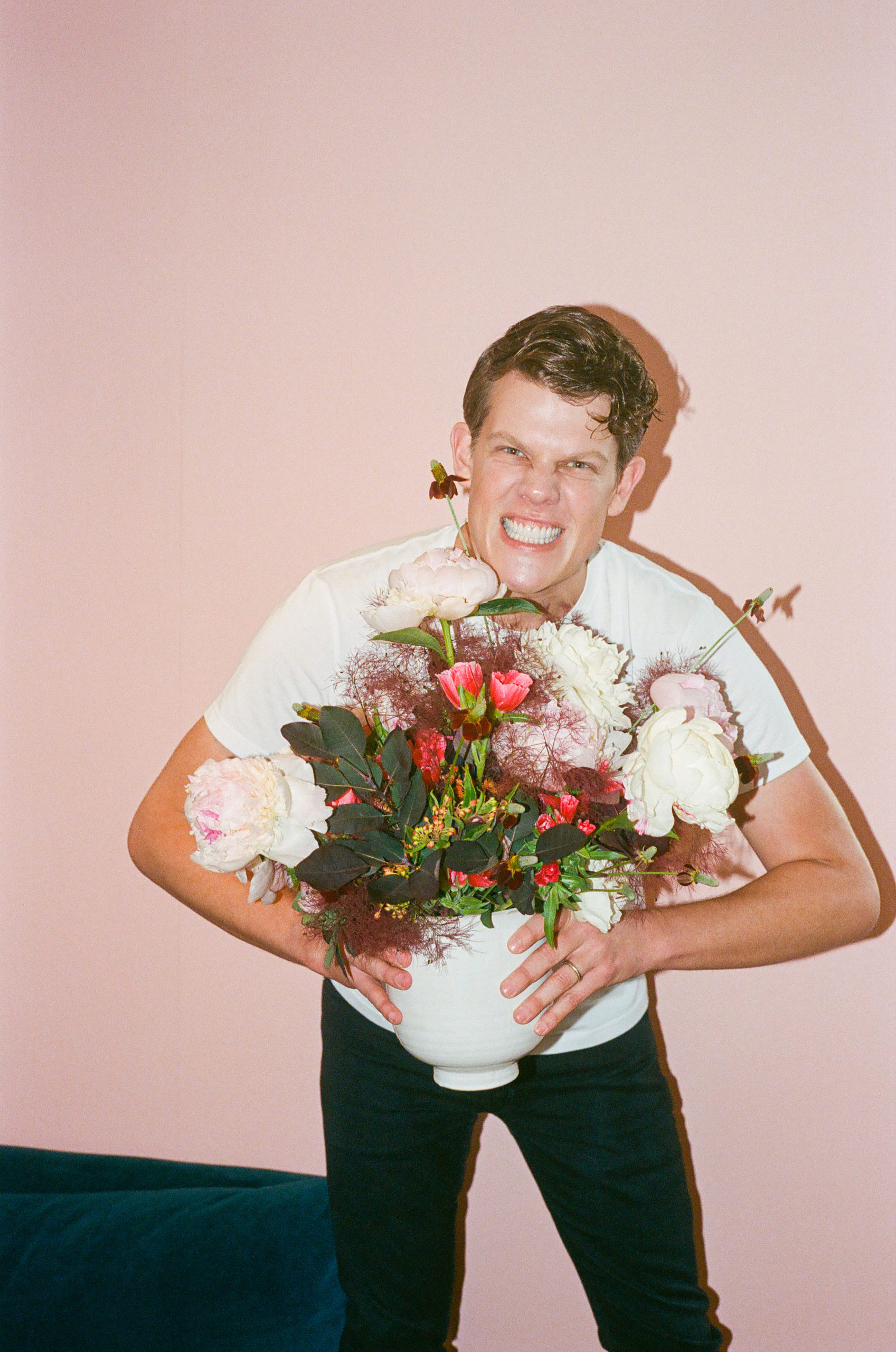
BERNHARD: How will you dress Henry?
GORDON: Oh my god, it’s ridiculous. The way I “nested” for the past six months was online shopping for baby clothes, to a point where my entire social media algorithm now is baby clothes. I’m going to take full advantage before he can tell me no.
BERNHARD: You must.
GORDON: I’m in a very full-on, porcelain doll, Victorian baby mode of ridiculous, starched, embroidered linen with little white shoes. That’s his city look. Everyone’s making fun of me. Paul is so furious. He wants all Zara Baby and kids Nike sneakers. And then I have all these seersucker overalls for Connecticut. I’m very specific about animal motifs. If he’s at the farm, they have to be farm animals. He was wearing a giraffe T-shirt the other day at the farm, and I was like, “What? There aren’t giraffes on a farm!”
BERNHARD: He’s not on a safari! Well, it’s going to be a great adventure. Now that we’re coming out of this, I’ll be calling you up to get a dress for my annual holiday show at Joe’s Pub.
GORDON: You got it.
———
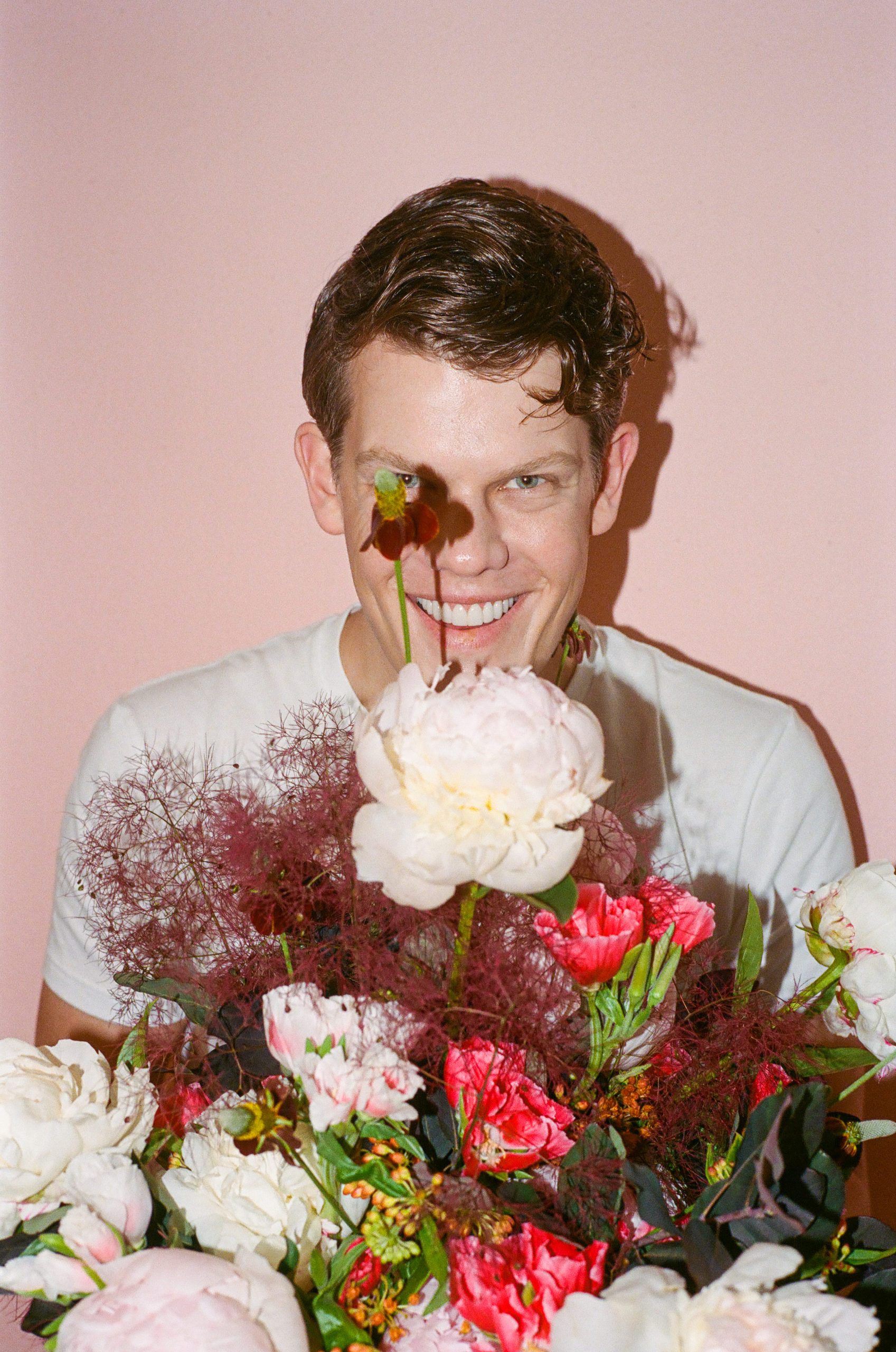
———
Hair by Yohey Nakatsuka.
Makeup by Seiya Iibuchi.

